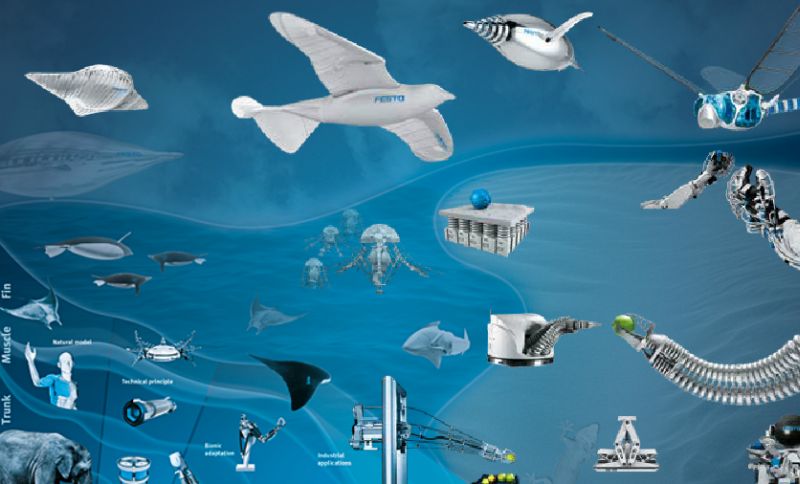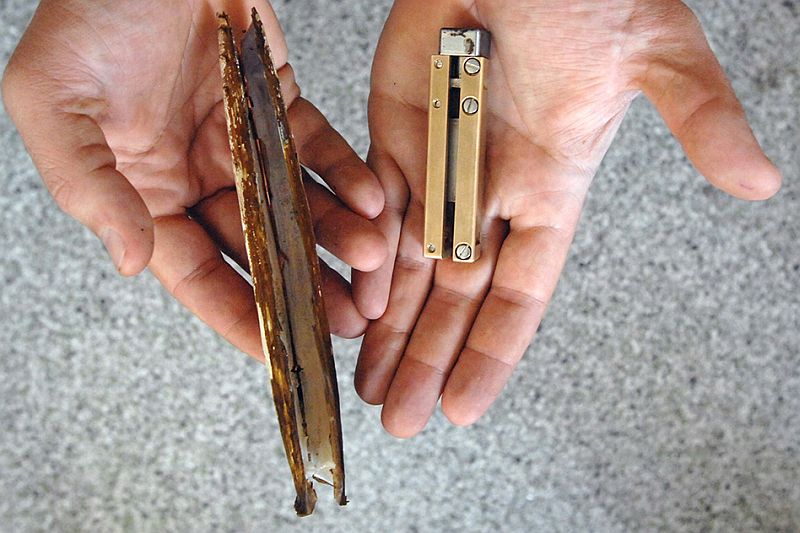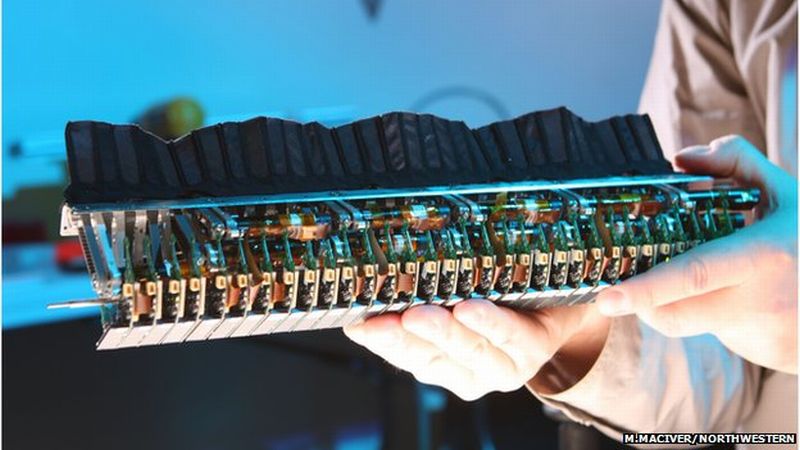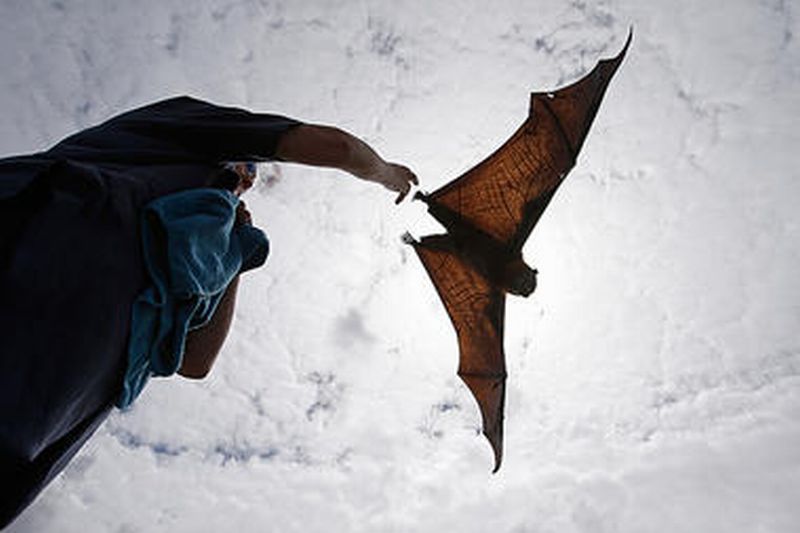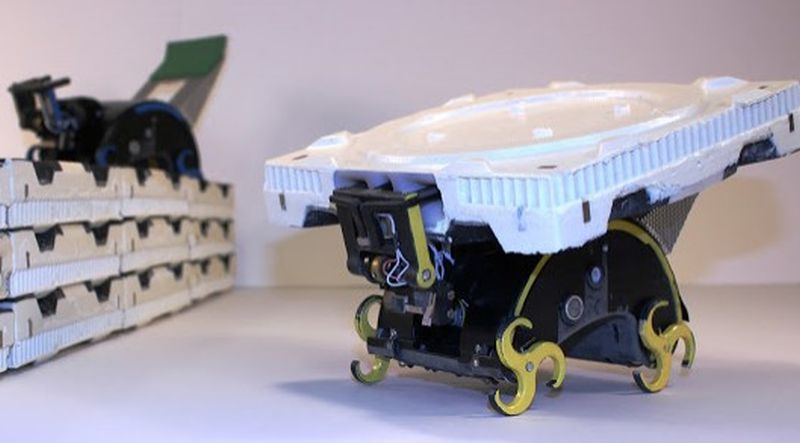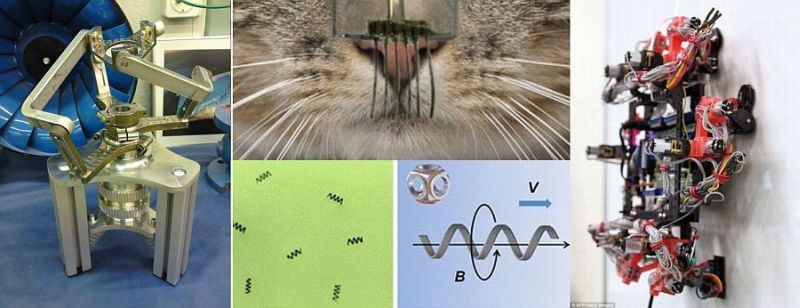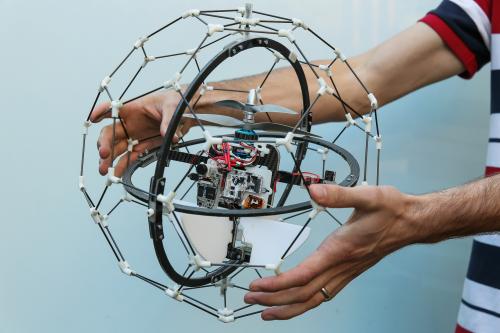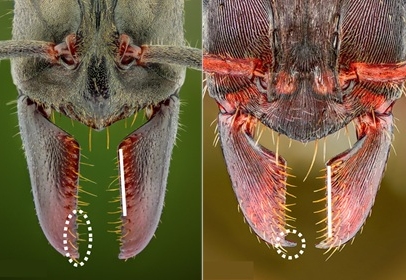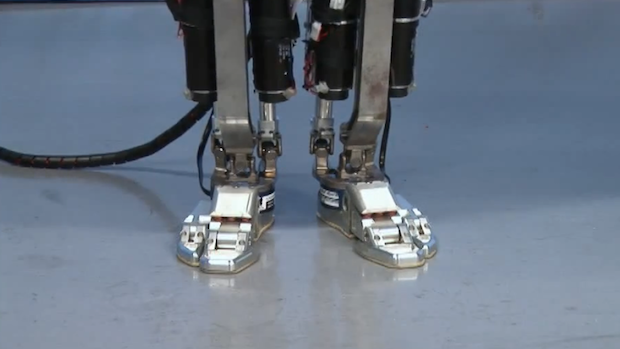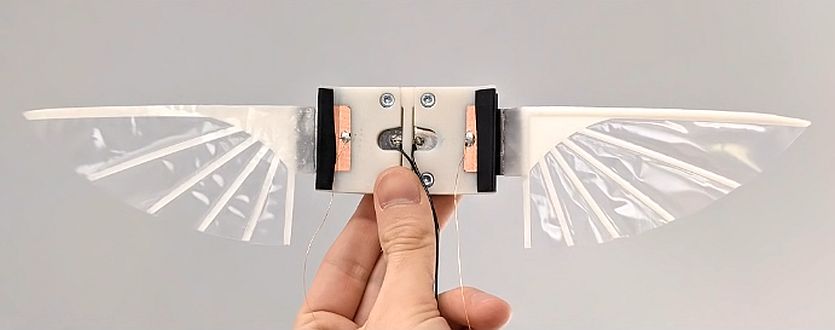Festo, a Germany based industrial control and automation company has been into research and development of bionics since more than two decades. It collaborated with renowned universities, institutes, development companies and private inventors across the globe and launched the Bionic Learning Network during 2006. And since then it has been delving into the subject and bringing about the best of biomimicry. Every time their new project gets into air, they prove how they are able to merge industrial automation, and combining electronics with pneumatics in new and efficient ways. Here…
Search Results for: biomimicry
Biomimicry: RoboClam Replicates Atlantic Razor Clam’s Dynamics
Biomimicry: RoboClam Replicates Atlantic Razor Clam’s Dynamics In order to understand the efficient workings of flora and fauna, scientists always try to emulate nature’s wisdom, to which they call biomimicry. In one such attempt, researchers at the Massachusetts Institute of Technology have created RoboClam that digs itself into the soil to annihilate mines and to bury anchors. Atlantic razor clam (Ensis directus) has a stiff shell yet it is able to thrust itself through soil with a rate of 1cm/s. It’s been long since researchers were working upon the mechanism as…
Ghost Knifefish Inspired Autonomous Underwater Vehicle: Biomimicry
In an attempt to design an underwater vehicle that can go into the depths of ocean, which are not, accessible or not safe for humans to dive in, scientists are studying the Ghost knifefish method of locomotion. The fish are known to hunt in the murky water of the Amazon basin with precision and to sense the environment, rely on the current that they pass through the water and whirl their long fin for smooth motion to move both horizontally (forward and backward) as well as vertically.
Biomimicry: Robotic Bats Might Fill the Skies Soon
According to a recent study, the manner in which bats flap their wings could actually be the source of inspiration for the upcoming designs of flying robots. The researchers investigated the way the fruit bats made use of their wings for manipulating the air around them. By developing the correct understanding of the functioning of these processes in nature, the engineers could practically come up with the design of small flying robo machines called the micro air vehicles. According to Danesh Tafti, from Virginia Tech, bats comprise of varied shapes…
Termites Inspire Crew of Tiny Autonomous Bots: Biomimicry
Inspired from termites, which are usually known for causing damages to the buildings, researchers from Harvard University have created a crew of tiny robots that are designed to work autonomously. The bio-inspired robots termed as TERMES can work without any central supervision and can carry bricks to construct structures as towers, castles and pyramids.
Robots Capitalizing On The Efficiency Of Nature: Biomimicry
Tentacles of biomimicry have entered into the technology realm as well and hence we are witnessing robots derived from the workings of mother nature. Researchers are working towards developing designs that might bestow the animal capabilities to machines. Cats Inspired E-Whiskers Electronic whiskers are one such offshoot created by the researchers at the Berkeley Lab. They fabricated this design using carbon nanotubes and silver nanoparticles. With this it seems after eclipsing the Silicon, the CNTs would now make its presence felt among robotics as well. These artificial whiskers are made…
Biomimicry: Gimball Robot Inspired From Insects
Gimball robot is a recent advancement in flying robots, which can maintain its due course even after crashing into any obstruction. Conventionally, robots find it difficult to maintain the line of course after any bump and after hitting, tend to go in arbitrary directions. The Gimball robot designed by EPFL PhD student Adrien Briod and his colleague Przemyslaw Mariusz Kornatowski, is a sensor free robot and is based on gyroscopic stabilization system to maintains its sense of direction. The robot consists of double carbon flexible spherical enclosure of 34cm in…
Interview: Dohyeon Lee, Robotics Scientist at Pohang University of Science & Tech, South Korea
Last week, I came across something that genuinely blew my mind – a flying squirrel-inspired drone with foldable wings. Yep, a drone that mimics how a squirrel glides through the air. It was one of those rare “wait, what?” moments that made me want to dig deeper. So, I reached out to the team behind it. Dohyeon Lee, one of the researchers on the project, said yes to an email interview.
AntGrip: Enhancing Gripper Performance with Ant-Inspired Hairs
Whenever I find myself really fascinated by biomimicry, I often discover new things inspired by it. This time, it’s a robotic hand that takes ideas from how ants work. Imagine you’re picking up a slippery soda can with a simple two-finger robot gripper. No suction cups, no fancy sensors, just friction. Sounds tricky, right? That’s exactly the kind of challenge researchers tackled by taking inspiration from “ants”.
Biohybrid Bipedal: Muscle-Powered Two-Legged Robot
Unlike robots, our bodies are super flexible and can make delicate moves effortlessly. Components like muscles, joints, and nerves work in tandem and allow us to make precise and delicate movements with ease. Robots, on the other hand, rely on rigid structures and predefined movements; in contrast, our bodies can adapt and respond dynamically to various situations.
Interview: Dr. Enrico Donato, BioRobotics Scientist at Scuola Superiore Sant’Anna, Italy
Dr. Enrico Donato is a Doctoral Researcher at the Brain-Inspired Robotics (BRAIR) Laboratory of The BioRobotics Istitute, Scuola Superiore Sant’Anna. With an insatiable appetite for scientific exploration, he delves deep into the fascinating realm of soft robotics. His mind dances with algorithms, composing intricate control models that breathe life into these mechanical marvels.
Interview: Dr. Kai Wang Materials Scientist at The Penn State
Dr. Kai Wang is PhD, Principal Investigator, and Assistant Research Professor at the Department of Materials Science and Engineering, Penn State. His recent work on intelligent and efficient panchromatic imaging for artificial retina biotechnology, caught our attention and so we tried to touch base with him for an interview. We got lucky, as he agreed to spend some time with us. Dr. Wang, here, talks about his quest to understand the mechanisms of cognition within the neural topological structures of the brain. And how these natural intelligences can be influenced…
Bio-Inspired Device that Mimics Human Eye: Artificial Vision Systems
Inspired by the natural design of our retinas, scientists at Penn State have created a sensor array using narrowband perovskite photodetectors to replicate the function of our cone cells. Cone cells in our eyes are responsible for color vision. And they are sensitive to red, green, and blue light wavelengths.
Interview: Dr Jie Yin, Associate Professor at North Carolina State University
Dr. Yin received his Ph.D. in Engineering Mechanics from Columbia University. Prior to join NC State, he worked as a Postdoctoral Associate at MIT and an Assistant and Associate Professor at Temple University. He is the recipient of the NSF CAREER Award and Extreme Mechanics Letters (EML) Young Investigator Award.
Insect sized Flying Robot with Flapping Wings: Micro air Vehicle
Researchers at the University of Bristol, U.K. have fabricated a flapping-wing microrobot that can produce more power than a similar-sized insect. The micro-air vehicle is a product of biomimicry, inspired from bees and other flying insects.

